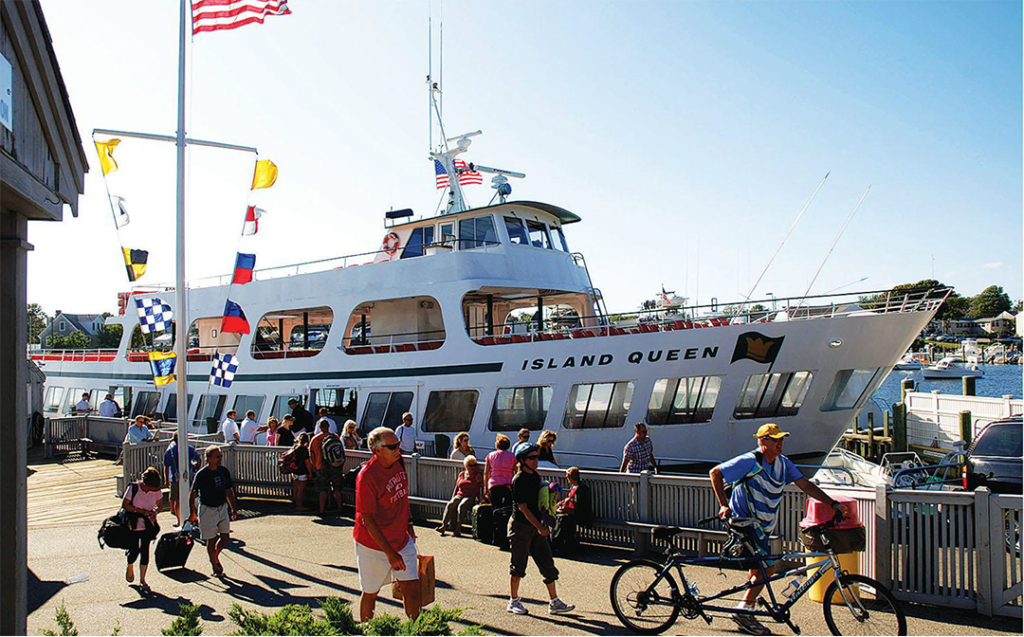 Previous Owner Began Construction Despite Zoning Violations
Previous Owner Began Construction Despite Zoning Violations
By Christopher R. Vaccaro
Special to Banker & Tradesman
A Falmouth builder recently learned the hard way that building permits and certificates of occupancy do not protect illegally built structures from timely forced removal orders.
Pheasant Lane in East Falmouth, a residential neighborhood near Green Pond and Menauhant Beach, is part of a subdivision created in 1970. The subdivision consists of several lots, each with roughly 10,000 square feet of area, which was the minimum lot size under Falmouth’s zoning bylaw in 1970. Homes have been constructed on most of these lots, but 33 Pheasant Lane, with 11,540 square feet of area, remained undeveloped.
After 1970, the zoning bylaw was amended three times to increase the appli cable minimum lot size; first to 15,000 square feet in 1971, then to 20,000 square feet in 1984, and finally to 40,000 square feet in 1993. Before the 1984 increase, 33 Pheas ant Lane was part of a 7-acre parcel under common ownership. The property was sold as a separate lot in 1985, with less than the required 20,000 square feet of area.
Undersized Lot Fails Zoning Test
The Massachusetts Zoning Act provides “grandfathering” protection from increased minimum lot size requirements for house lots not held in common ownership with ad joining land, if they conform to then-existing requirements and have at least 5,000 square feet of area and 50 feet of frontage. Because 33 Pheasant Lane was owned in common with adjoining land when the minimum lot size increased in 1984, it is not grandfathered. In 1994, the Falmouth Zoning Board of Appeals (ZBA) issued two decisions pre venting construction on 33 Pheasant Lane.
None of this history deterred Pheasant Lane LLC, which contracted to buy the lot and applied for a building permit for a single-family home in November 2018. Its building permit application contained two misstatements; namely, that the lot was not an “undersized lot,” and that it had not been the subject of a prior ZBA decision. After the Falmouth building commissioner issued a building permit, Pheasant Lane LLC bought the undersized lot for $165,000 in January 2019.
When work began in early 2019, a neighbor, who was also a ZBA member, complained to the building commissioner. The building commissioner refused to act. Falmouth’s town counsel informed the builder about the zoning problem in March 2019, before the builder had done significant work, but the builder continued construction. The neighbor appealed to the ZBA. While that appeal was pending, the building commissioner issued a certificate of occupancy for the completed home.

A Nonprofit Spies and Opportunity
In December 2019, the ZBA (with the neighbor recusing himself from the decision) ordered the building commissioner to rescind the certificate of occupancy, and required the builder to return 33 Pheasant Lane to “its natural state” as it existed before construction. The building commissioner ordered the builder to remove the home from the property within 30 days. The builder appealed to the Land Court.
Falmouth Housing Trust, Inc., a nonprofit that promotes the development of affordable housing in Falmouth, saw an opportunity.
Falmouth is currently 417 units short of the required number of affordable dwelling units needed for Falmouth to use regulatory ex emption thresholds under the “anti-snob zoning” act in Massachusetts General Laws, Chapter 40B.
The Falmouth Housing Trust offered to buy the property from the builder if it could obtain a comprehensive permit from the ZBA allowing use of the property as an affordable single-family dwelling for a low- or moderate-income household. The builder accepted this offer, hoping for a graceful exit from this debacle. The ZBA issued the comprehensive permit for the affordable dwelling unit in September.
Addie Drolette, the president of the Falmouth Housing Trust, summarizes the bene fits of this outcome.
“Considering the lack of workforce housing in Falmouth, the Falmouth Housing Trust could not sit by and watch this beautiful home be demolished without attempting to save it. We are grateful to the town and its leadership for accepting our efforts to create another affordable home, and for the builder’s willingness to sell the property at a significant loss rather than continue with the litigation,” Drolette said.
The builder could have avoided this problem to begin with, if before it bought the lot and built the house, it had done a thorough zoning analysis, and disclosed that the lot was undersized under local zoning in its building permit application. The Falmouth building commissioner also deserves some blame, for issuing a building permit on an 11,540 square-foot lot in a zoning district with a minimum lot size of 40,000 square feet.
Download the article as seen in Banker & Tradesman on October 31, 2022. Learn more about Christopher R. Vaccaro.